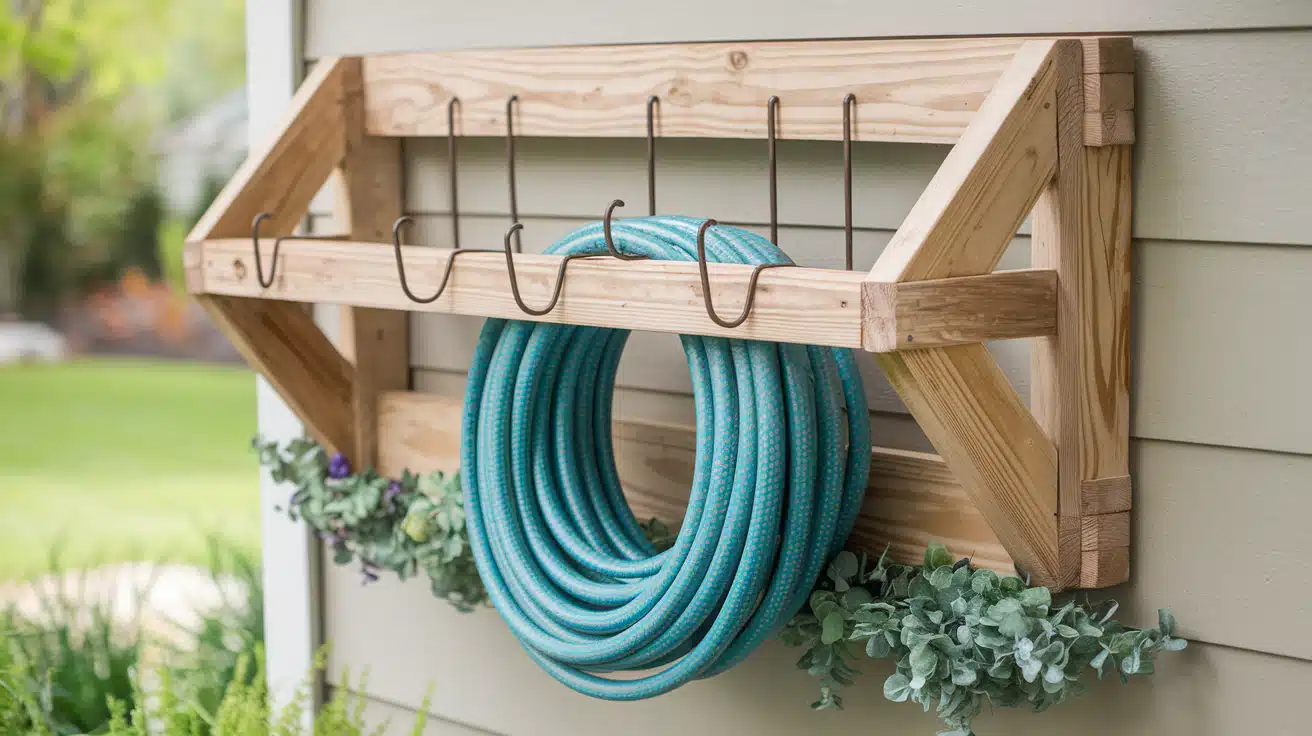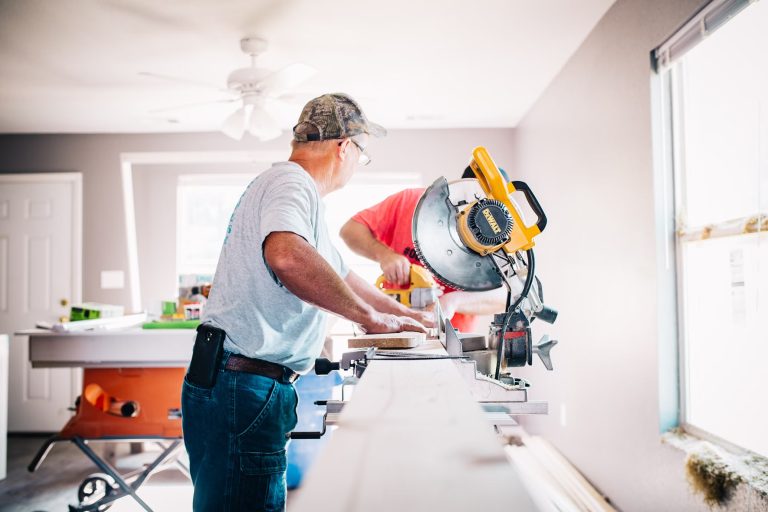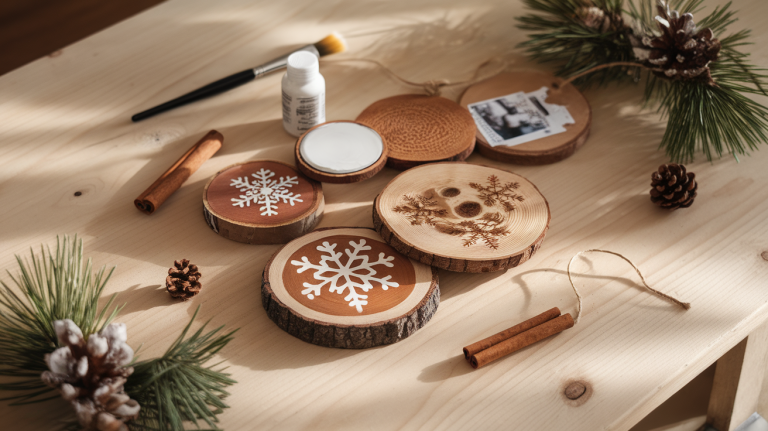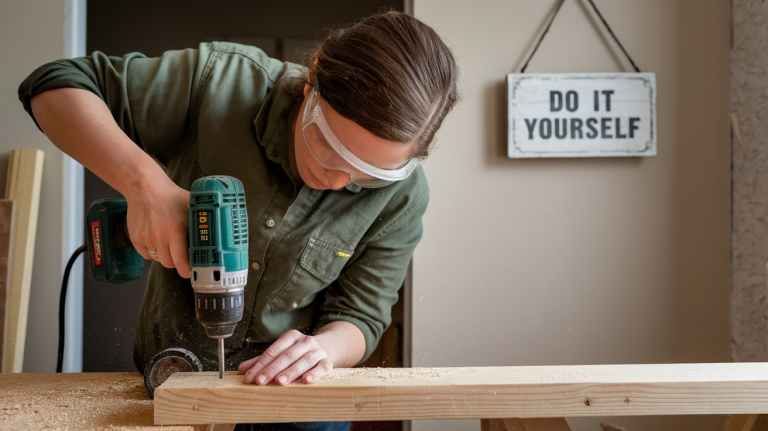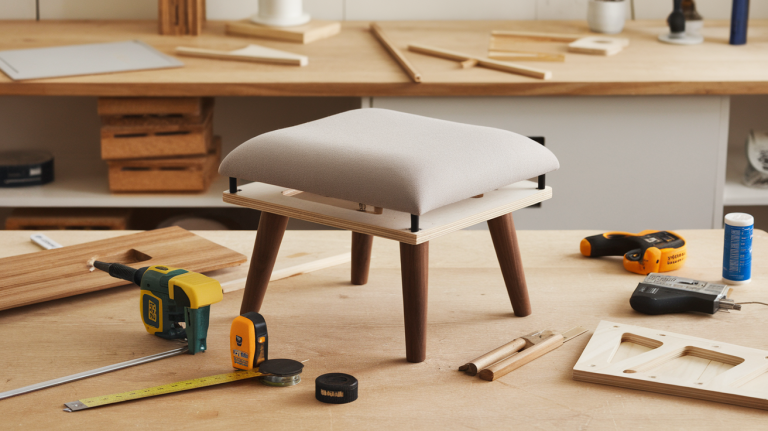Step-by-Step Guide to Building a Garden Hose Holder
Tired of tripping over tangled garden hoses in your yard? I know the frustration of messy hoses taking up space and creating safety risks around the house.
A simple wall-mounted hose holder can solve this common garden problem.
I’ll show you how to build a sturdy and practical hose storage system using basic materials from your local hardware store.
In this guide, I’ll walk you through making a wooden hose holder that organizes your garden tools.
You’ll learn which supplies to get, how to measure and cut the wood correctly, and tips for mounting it securely.
Plus, I’ll share some smart add-ons that make watering plants easier.
Materials and Tools You’ll Need
Materials
| Item | Specification | Details/Notes |
|---|---|---|
| Plywood | 3/4 inch thick | 24×24 inch piece, exterior grade for weather resistance |
| Wood Screws | 2.5 inches | 8-10 pieces, rust-resistant or stainless steel |
| Wall Anchors | Heavy-duty | 4 pieces, rated for outdoor use |
| Wood Sealer | Exterior grade | Clear or tinted, waterproof formula |
| Mounting Brackets | L-shaped | 4 pieces, galvanized or stainless steel |
| Sand Paper | 120 and 220 grit | For smooth finish and edge work |
| Wood Stain | Exterior grade | Optional: choose a weather-resistant type |
| Corner Braces | 2 inches | 2 pieces for extra support |
| Rubber Tips | 1/2 inch diameter | 2 pieces to protect the hose from wear |
| Paint | Exterior latex | Optional: pick the weather-resistant type |
Tools
| Item | Specification | Details/Notes |
|---|---|---|
| Saw | Hand or power | For cutting plywood to size |
| Drill | Cordless/Electric | With various drill bits |
| Level | 12 inch | For proper mounting alignment |
| Pencil | Carpenter’s | For marking measurements |
| Measuring Tape | 25 feet | For accurate cuts and placement |
| Screwdriver | Phillips’s head | For mounting hardware |
| Safety Glasses | Standard | For eye protection |
| Work Gloves | Fitted | For hand protection |
| Square | Carpenter’s | For marking straight lines |
| Hammer | Standard | For anchor installation |
Step-by-Step Guide: Building a Garden Hose Holder
Step 1: Gather Materials
Begin by collecting all the necessary materials: wood, screws, a drill, measuring tape, wood glue, hooks (for hanging the hose), a saw, and sandpaper. Ensure you have everything ready before you start the project.
Step 2: Measure and Cut the Wood
Decide the dimensions of your garden hose holder based on the space available. Use a measuring tape to mark your cuts on the wood.
Typically, you’ll need four pieces: two for the vertical sides and two for the horizontal top and bottom. Cut the wood pieces accordingly using a saw.
Step 3: Sand the Wood
Once the wood is cut, use sandpaper to smooth all the edges and surfaces. This will ensure the wood is splinter-free and safe to handle, especially if you’re using it outdoors.
Step 4: Assemble the Frame
Begin assembling the frame by attaching the horizontal pieces to the vertical pieces. Use nails or screws to secure the frame. Ensure the corners are square and the pieces are level. This forms the basic shape of the hose holder.
Step 5: Attach Hooks or Brackets
Position the hooks or metal brackets along the front or bottom part of the frame. These will hold the hose in place. Ensure they are spaced adequately to allow easy hanging and removal of the hose. Secure them with screws.
Step 6: Add a Back Panel (Optional)
If desired, add a back panel to your hose holder for stability. Use a plywood sheet or another piece of wood to fit snugly behind the frame. Attach it with screws or nails.
Step 7: Paint or Stain (Optional)
For added protection and to enhance the look of the holder, you may want to paint or stain the wood. Choose an outdoor-safe paint or stain to protect the wood from weather damage. Apply a coat and allow it to dry completely.
Step 8: Prepare for Mounting
Determine where you want to place your garden hose holder. Mark the spots where you will install screws or mounting hardware on both the frame and the wall. Make sure to choose a location that is easily accessible and close to the faucet.
Step 9: Mount the Holder
Use a drill to create pilot holes in the frame and the wall. Insert wall anchors if needed for extra support. Then, screw the holder into place, ensuring it is level and secure.
Step 10: Test the Holder
Once the holder is mounted, test it by hanging your garden hose on the hooks or brackets. Ensure the hose fits well and the holder is sturdy enough to support its weight.
This DIY garden hose holder is functional and adds a rustic touch to your outdoor space. Follow these steps, and you’ll have a neat and organized place to store your garden hose for years.
Video Tutorial
Check out this YouTube video by DIYwithCookie&Pops for a detailed Step-by-Step Guide to Building a Garden Hose Holder.
Tips for Maintenance & Care for Your Garden Hose Holder
To ensure your garden hose holder remains in good condition and continues to serve its purpose, follow these practical maintenance tips:
1. Regular Cleaning
Over time, dust, dirt, and even algae can build up on your hose holder, especially if it’s placed outdoors. Clean it periodically with a damp cloth or sponge. For deeper cleaning, use a mild detergent mixed with warm water.
Avoid using harsh chemicals that could damage the wood or paint.
2. Check for Rust on Metal Parts
If you use metal hooks or brackets, check them regularly for signs of rust. Even a little rust can spread quickly, so it’s essential to address it early. To remove rust, scrub the affected area with a wire brush or sandpaper, then apply rust-resistant metal paint to protect it.
3. Inspect the Frame for Damage
Check the frame of the holder for any cracks, splinters, or signs of wear and tear. If the wood starts to degrade, you may need to sand it down or replace damaged sections. Ensure that the screws or nails holding the frame together are tight to avoid instability.
4. Protect the Wood
If your holder is made of wood, it’s important to protect it from weather conditions.
Apply an outdoor wood sealant or water-resistant stain every 6–12 months to prevent water damage, cracking, and fading. If you live in a particularly wet area, you may want to apply a sealant more frequently.
5. Prevent Mold and Mildew
Outdoor garden hose holders can be prone to mold and mildew growth, especially in humid climates.
To prevent this, ensure your holder is in a well-ventilated area that can dry out between uses. If mold does appear, clean it off with water and vinegar.
6. Winter Care
Removing the hose holder during winter or covering it to protect it from snow and ice is a good idea in colder climates. If you leave it outside, ensure it’s secured properly and no water is left in the hose holder to avoid freezing.
Conclusion
Building your garden hose holder brings more than just yard organization. This simple project adds value to your daily gardening routine by keeping your tools ready and your space clean.
After following this guide, you have a strong, lasting solution for hose storage. The design fits most spaces and helps prevent common issues like tangles and trips.
Keep up with basic maintenance; your holder will serve you well through many growing seasons. A clean, organized garden space makes every watering task simpler.
Remember to check the mounting and seals regularly, especially after harsh weather. Proper care ensures your DIY hose holder stays strong, making your garden tasks smoother and your outdoor space safer.
Ready to start building? Your garden awaits.

